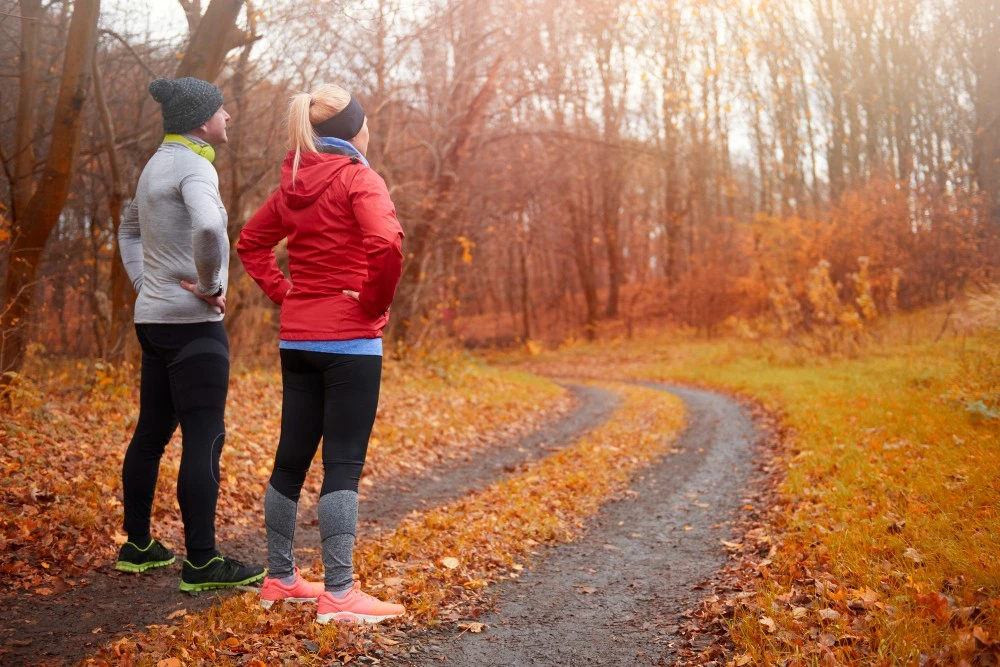Table of Contents
Introduction to Walking and Weight Loss
Walking is a popular exercise to lose weight and improve health. It’s easy to do and works for everyone, no matter their fitness level. You can walk to work, during lunch, or in the evenings.
Walking does more than help you lose weight. It also boosts heart health, metabolism, and mood. Studies show walking burns calories, helping with weight control. It’s great for losing belly fat, which is linked to serious health issues.
Walking is simple and flexible. You don’t need special gear or a gym membership. It fits into any lifestyle, helping you stay active and healthy. Walking in cities or nature is good for both your body and mind.

The Science Behind Walking and Fat Loss
Walking is key to losing weight and belly fat. It burns calories and boosts metabolism. This helps manage weight.
Studies show walking 30 minutes a day burns a lot of calories. A brisk walk can burn 150 to 200 calories, depending on your weight and pace. This helps you lose weight over time with a balanced diet.
Walking also makes your body burn more calories after you stop. This is called afterburn. Your body uses energy at a higher rate after exercise.
Walking changes how your body stores and uses fat. It helps use stored fat for energy, which is good for belly fat. This is important for health.
Walking also makes your body better at using insulin. This helps with weight management. As you walk more, your body gets better at burning fat, leading to weight loss.
In summary, walking burns calories, boosts metabolism, and helps use fat. It’s a powerful way to lose weight and reduce belly fat.
Setting Realistic Walking Goals
Setting achievable walking goals is important to lose weight and belly fat. Start by knowing your current fitness level and how walking fits into your day. Focus on small, gradual changes.
When setting goals, think about how long and often you’ll walk. Aim for 150 minutes of brisk walking a week. This is about 30 minutes a day. If you’re new to walking, start with shorter walks and increase them as you get fitter.
Make a walking schedule that fits your life. Consider work, family, and personal preferences. Choose times that work for you, like mornings, lunch, or evenings. Sticking to a routine makes walking a part of your daily life.
To boost your motivation, set both short-term and long-term walking goals. Start by aiming to walk for a certain number of minutes without stopping. Then, increase your walking time or try different terrains, like hills, to challenge yourself.
By celebrating your achievements, no matter how small, you build momentum. This helps you stay committed to your weight loss journey through walking.
Incorporating Walking into Your Daily Routine
Walking is a great way to lose weight and reduce belly fat. Use your lunch break for a brief walk. This not only gets you moving but also gives you a mental break from work.
Aim for 15-30 minutes of walking during your lunch hour. Invite a colleague to join you for a social walk.
Choose stairs over elevators or escalators whenever you can. This adds up to extra walking and boosts your heart rate. Also, park farther away and get off public transport a stop early to increase your steps.
To walk more, look for chances around your home or workplace. Walk to the mailbox, shop locally, or pace while on phone calls. Use a pedometer or app to track your steps and stay motivated.
Vary your walking routine to keep it fun. Try new routes, like parks or trails, and join walking groups or challenges with friends. These strategies can make walking a fun part of your daily routine.
Walking vs. Other Forms of Exercise
Walking is often seen as less intense than running or cycling. But it has unique benefits, like being low-impact. This makes it great for people recovering from injuries or with joint issues.
Walking is easy to do anywhere, needing only a good pair of shoes. This makes it easy to keep up with, which is key to losing weight and managing belly fat. It’s a great way to start exercising, even if you’re new to it.
Walking can also improve your fitness when done with other exercises. It’s a good warm-up or cool-down before or after more intense workouts. Mixing walking with other exercises keeps your workouts interesting and balanced.
Walking also boosts your mental health. It gives you time to think and can reduce stress. So, walking is not just good for your body but also for your mind.
Nutritional Considerations for Maximum Results
Walking helps with weight loss and belly fat reduction. But eating right can make it even more effective. A balanced diet fuels your walks and supports your health.
Eat a small snack before walking that has carbs and protein. Foods like whole grains, fruits, and vegetables give you energy. Protein sources like yogurt, nuts, or eggs help keep your muscles strong. Aim to eat this snack 30 to 60 minutes before walking.

What to Eat Before and After Walking
Eating the right foods before and after walking is key for recovery and energy. Eat a meal or snack with carbs and proteins within an hour of walking. This helps repair muscles and replenishes energy stores. Try a smoothie with fruit and protein powder or a turkey sandwich on whole grain bread.
Drinking enough water is also important for walking to lose weight. Drink water before, during, and after walks. It helps your body work better and supports your performance. In hot weather or for long walks, drink electrolyte-rich drinks to replace lost minerals.
Walking can help you lose weight if you eat well and stay hydrated. By focusing on what you eat before and after walks, you can get the most out of this simple exercise.
Staying Motivated to Keep Walking
Staying motivated is key to losing weight and belly fat through walking. Tracking your progress can help. Use fitness apps or a diary to see how far you’ve walked and calories burned. Seeing your progress can make you more excited to keep going.
Joining walking groups or clubs can also help. They offer support and a chance to meet new people. Walking with friends makes it more fun and keeps you accountable. Having a walking partner can also make it easier to stay on track.
Making walking fun can also keep you motivated. Listen to music or podcasts while you walk. It makes the time go by faster and makes walking more enjoyable. Try new routes to keep things interesting and exciting.
Addressing Challenges and Overcoming Obstacles
Walking is great for weight loss, but challenges can get in the way. Common problems include lack of time, bad weather, and physical issues. Knowing these challenges helps you find ways to overcome them.
Time is often a big problem. Busy schedules can make it hard to find time to walk. Try short walks during the day, like during lunch or taking the stairs. These small steps can add up and help you reach your goals.
Bad weather can also stop you from walking outside. Rain, snow, or cold can be a barrier. Use indoor treadmills or walk-in malls to stay active. Dressing right for the weather can also make outdoor walks more comfortable.
Physical issues like injuries or chronic pain can also stop you. Always talk to a doctor before starting a walking program. Adjust your walks to fit your abilities, like choosing easy paths or wearing supportive shoes. Start slow and gradually increase your walks to build up your endurance.
By tackling these challenges and finding solutions, you can keep walking to lose weight. Think about your own situation and plan ahead to overcome obstacles.

Conclusion and Next Steps
Walking is a great way to lose weight and reduce belly fat. We’ve talked about how it helps create a calorie deficit and boosts metabolism. It’s also good for your overall health.
Walking is easy to do and works for people of all fitness levels. It also makes you feel better and less stressed. This makes walking a smart choice to lose weight.
Start walking regularly to make it a part of your daily routine. Try to walk at least 150 minutes a week. You can do this by walking briskly in short sessions throughout the day.
Use apps to track your steps and stay motivated. These apps let you track your progress, set goals, and join challenges. They make walking more fun.
Join local walking groups or clubs to stay accountable and meet people. Walking with others who have the same goals can be very helpful. You’ll get support and encouragement, and you might learn new things about walking.
In summary, walking is a key to losing weight and getting healthier. By following these tips and staying positive, you can start your weight loss journey. So, take that first step today and see the benefits for yourself.



3 comments
[…] this guide, we’ll explore what to consider when choosing between walking or running. Our goal is to help you pick the best option for your health and […]
[…] cutting carbs really help you lose weight? Think again! Carbohydrates are key for your body’s energy. It’s not just how much you […]
[…] are the most common, letting you walk, jog, or run indoors. They have features like adjustable inclines and heart rate monitors. For […]